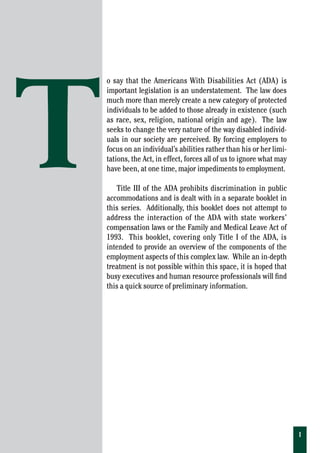The document provides an overview of the employment aspects of the Americans with Disabilities Act (ADA), focusing on its provisions and processes for employers with 15 or more employees. It outlines guidelines for determining disability, qualifications, and reasonable accommodations while prohibiting discrimination based on disability. Additionally, it establishes a framework for addressing potential ADA issues through a six-step model, emphasizing the need for employers to assess individual capabilities rather than limitations.























